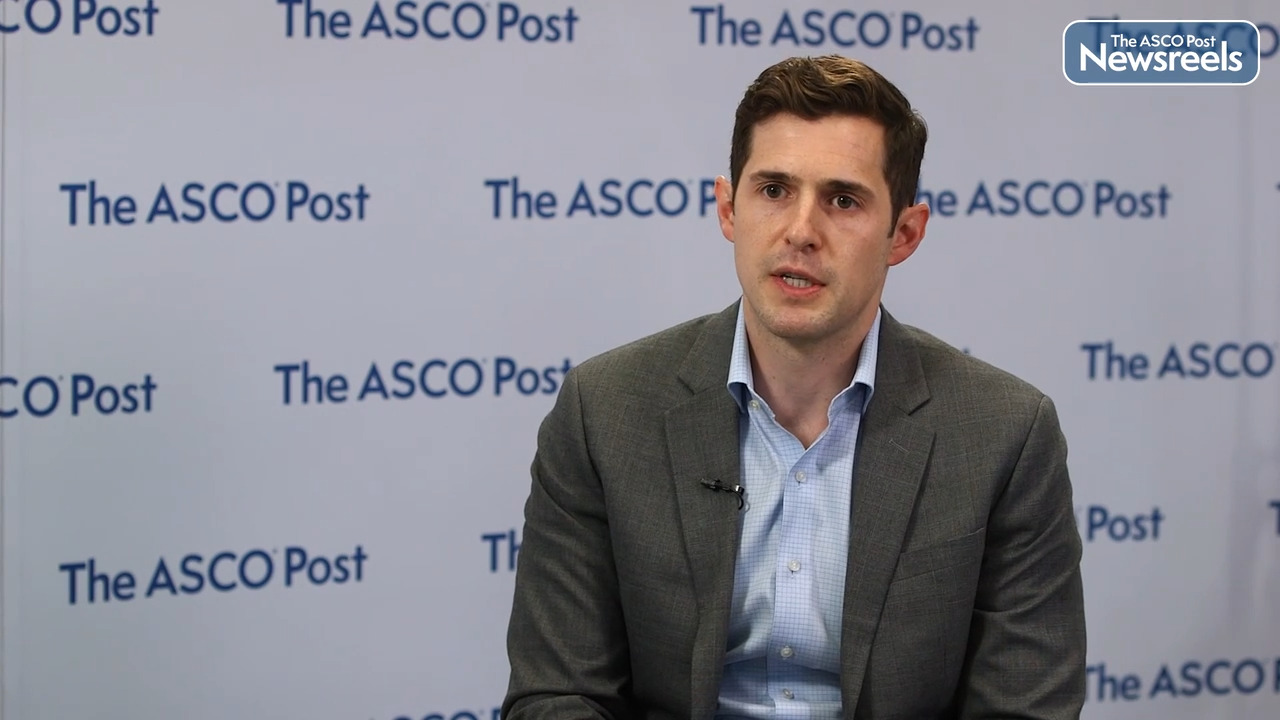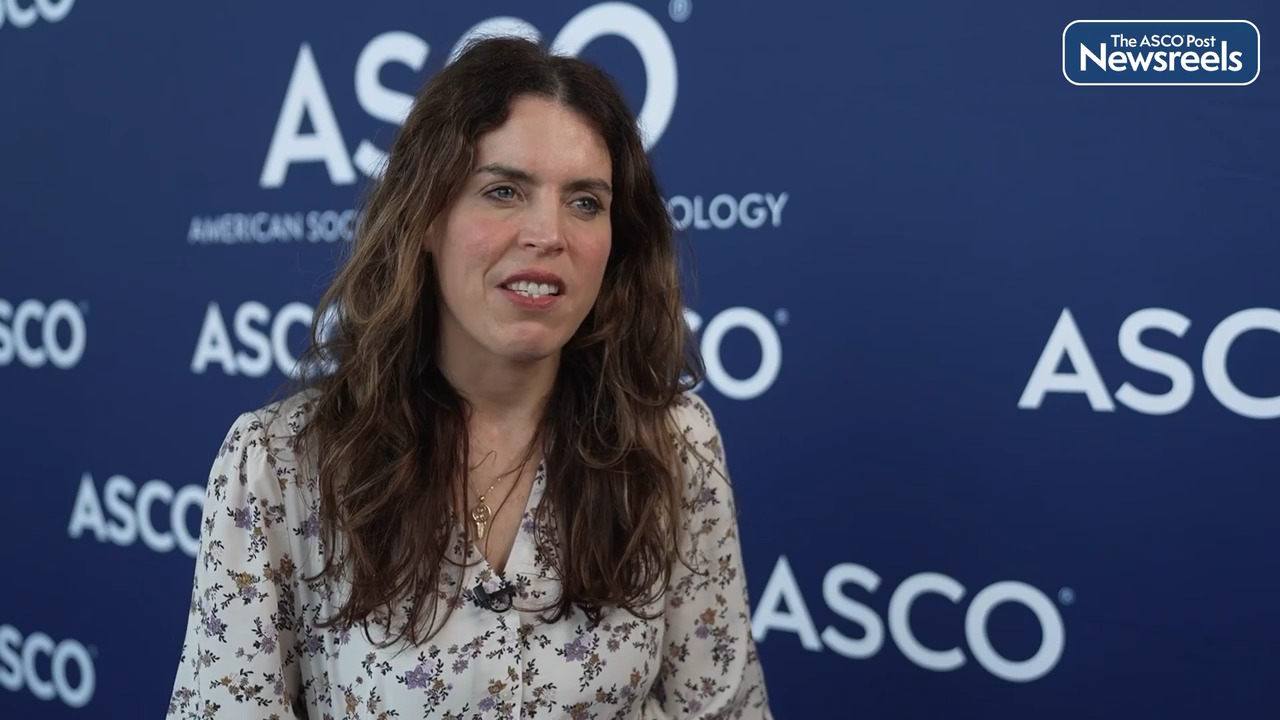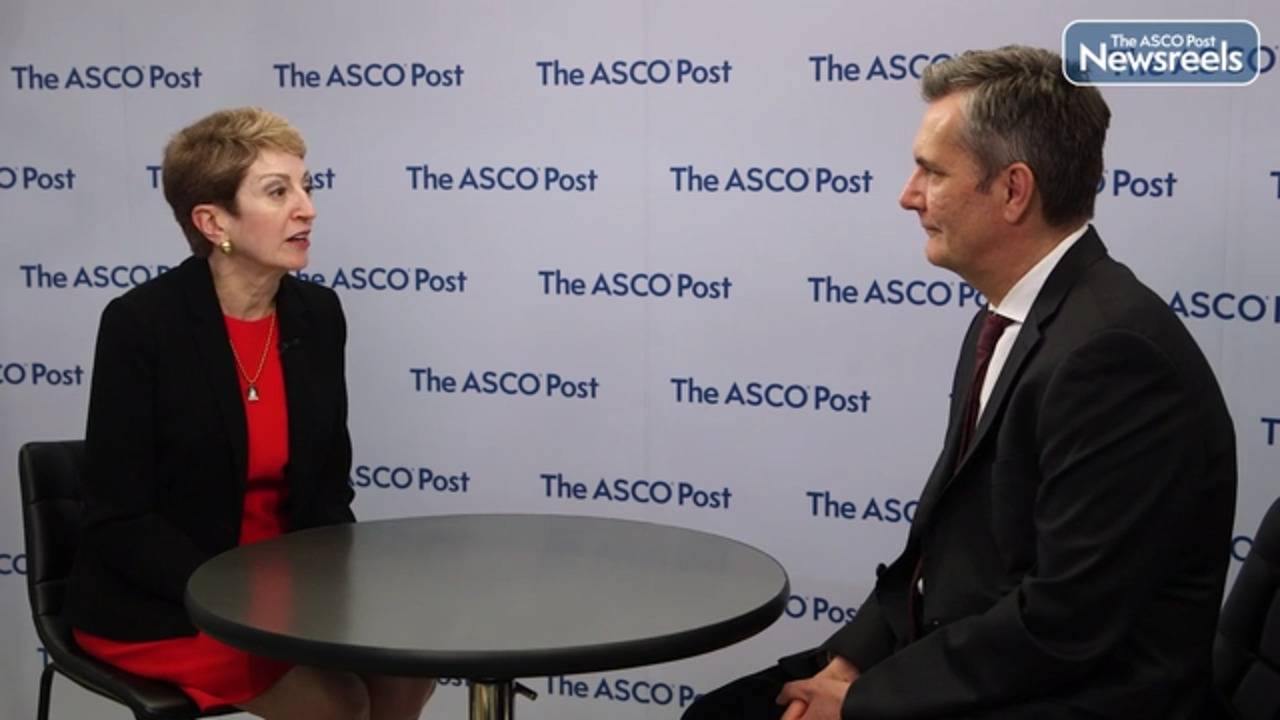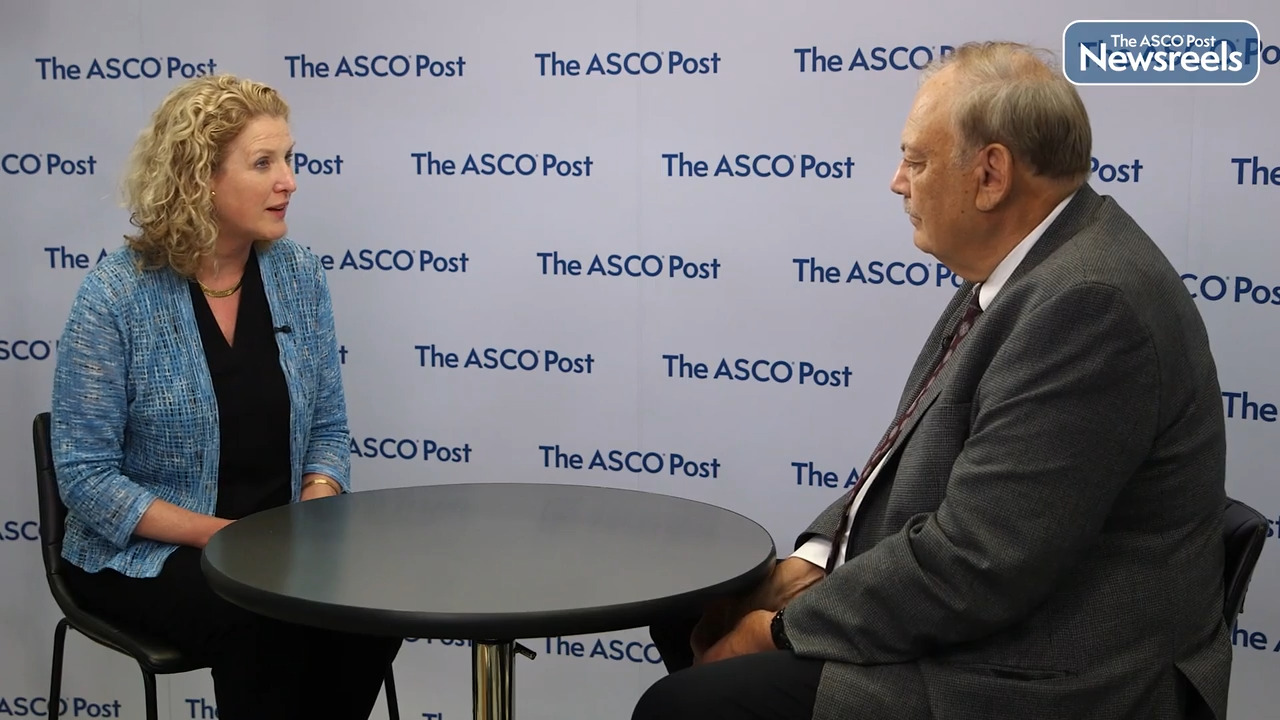Transcript
Disclaimer: This video transcript has not been proofread or edited and may contain errors.
Eunice S. Wang, MD:
Dr. Roloff, thank you so much for taking the time. Now, CAR-T therapy has really revolutionized therapy for heme malignancies, but people really want to know is it relevant? Is it really real world? Can you tell me a little bit about your talk here at ASCO?
Gregory Roloff, MD:
Sure. It's a pleasure to see you again Dr. Wang, and I appreciate your question. Yeah. You’re getting to the meat of the argument right there, is whenever new drugs are approved, one of the first things that we often say to ourselves is, are these data externally generalizable? Do they apply to the patients sitting right in front of me? And were there elements of patient selection in the trial that give me concern about trusting the data working for my patient? And so in adults with relapse refractory ALL, the patient population is one where generally speaking, these individuals have been highly pretreated and there are limited options available for what they might be treated with next upon subsequent relapse episodes.
And so the backdrop for my study was a clinical trial that was published in The Lancet in 2021, evaluating the safety and efficacy of Brexucabtagene autoleucel or Brexu-cel and adults with relapse refractory (B-ALL). And once Brexu-cel was approved on the basis of these results and hit the market, doctors right away began to wonder if a post-approval study, so-called real world as they're coming to be known, would be worth it to see how this performed on the ground outside the context of the clinical trial. And so the study that I presented yesterday at ASCO was one, the first look at data from an ongoing multi-center retrospective analysis of 13 centers, spanning 76 patients looking at the performance of this drug in the real world.
Eunice S. Wang, MD:
So I saw amazingly high response rates. I mean, just incredible that even out in the community and out in our centers we're still doing great. Is that correct?
Gregory Roloff, MD:
Yeah, that was a bit surprising, I must be honest. The response rates were very high. The CR/CRi was 91%, but I would also highlight that the toxicities and specifically Neurotoxicity was higher than was observed on the trial. The grade 3, 4 Neurotoxicity and our study in the real world was 38% of patients and it was closer to about a quarter on the trial. Conversely, grade 3 to 4 cytokine release syndrome (CRS) was very small in our real world cohort, which was again about 25% on the study.
Eunice S. Wang, MD:
So what people really care about, however, is overall survival. You know, how many people are alive at a year for say afterwards. Does your data help us with that? And is there any way to predict who might be alive six to twelve months after CAR-T?
Gregory Roloff, MD:
Sure. So I think the nascency of this study does not allow us to make those conclusions yet. What we saw with at least six months of follow up is that with regard to overall survival, there was little difference between patients who are CR with MRD-negative status or CR with MRD positivity, we think this likely reflects the efficacy of salvage measures that are able to be employed and mobilized in folks who are found to have measurable residual disease after CAR-T. But with more follow up and more patients, the expectation might be that we would be able to quantify the median duration of remission and the overall survival going forward.
Eunice S. Wang, MD:
So there's always questions about only 13 centers, short follow up. So your plans moving forward is to make this more broadly applicable?
Gregory Roloff, MD:
Very much so. We've learned a lot about the exercise of large group work databasing and doing good retrospective observational work where you know that you're going to have to fill in some holes along the way and remain in very open dialogue with your participants. And so at the time of ASCO data submission, we had, as you mentioned, 76 patients spanning 13 centers. But even since we've presented this data, we've actually picked up speed quite a bit. And so as of this morning, for example, we have about 30 centers who are on board and data for 135 patients. And in conversations that I've had with other folks who have expressed interest, even within the past day since I've presented, I could forecast 150 to 175 patients within the next few months. And that should be a sufficiently large data set with sufficient follow up time to give us a clearer picture of how this drug performs in the real world.
Eunice S. Wang, MD:
So Dr. Roloff, excellent, outstanding work. Do you have a final take home point on what audiences should look forward to? Is this sort of pending attractions or anything actionable we can learn now?
Gregory Roloff, MD:
Well, I think management of toxicity is still somewhere where we have a long way to go. I think as a field cell therapists have gotten much more comfortable starting CRS and ICANS management early and more intensively because we know that we will save you time on the backend and you might be able to curtail the severity of some of these complications. But the products are quite active and we're excited to see new constructs that were also presented yesterday that might prove to be exciting options for our patients. All in all, I think that the future is bright for this disease and it's overdue. This is a condition where historically we've experienced very tough outcomes for our patients.
Eunice S. Wang, MD:
And I would agree with that. Thank you so much for your contribution to the literature.
Gregory Roloff, MD:
It's great to see you again, Dr. Wang. Thanks for your time.





